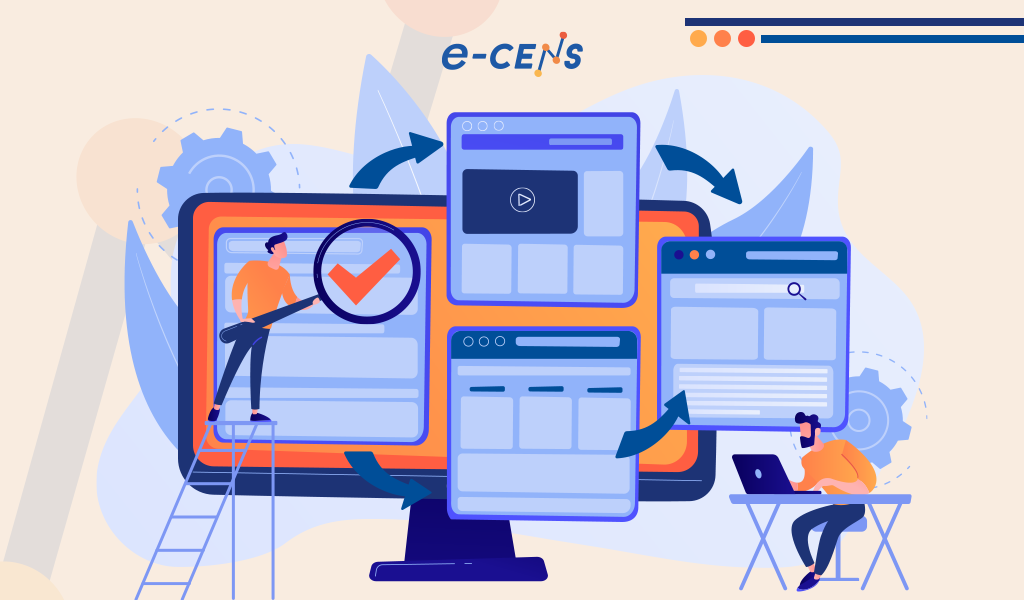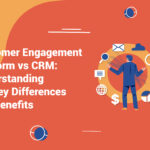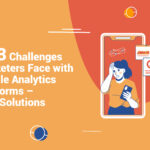Ever wondered how some brands magically read your mind?
Those types of notifications appear at the very right moment, offering precisely what you are looking for.
It is no coincidence, but it results from understanding and optimizing what marketers call marketing touchpoints. These touchpoints shape the customer experience; it can simply be viewing an ad on social media, talking to a sales representative, or pushing a customized notification.
Pro Tip: Leverage data analytics to ensure a successful and profound user journey for every customer. This will help you map out their interactions and, hence, enhance the experience.

What Are Marketing Touchpoints?
Marketing touchpoints are defined as:
“The moments when customers interact with a brand, product, or service during their journey. This extends from the first time they viewed an ad and up to the post-purchase.”
There are 3 different types of touchpoints: digital (emails, push notifications, and ads on social media), physical (in-store experiences), and indirect (word-of-mouth recommendations). Once businesses understand these interactions, they can expect to gain vital details and that will help us influence a customer’s decision-making process and, overall, the brand’s perception.
Touchpoints – Follow These Dos and Don’ts for Optimal Results
- Push:
Push Notifications are widely used as a re-engagement channel between the brand and the user.
They offer a direct line of communication to keep your customers returning to the application. This feature enables your business to segment the users based on their behavior, location, demographics, and time zone.
You can send a push notification from your app once the customer enters a predefined fence that your physical store is nearby, encouraging the user to visit the store.
Additionally, a notification can be sent to the users based on their peak active time, which allows you to re-engage them while minding time zone differences.
However, the risk lies in the number of notifications sent. You do not want to bombard the user with too many push notifications, as that may lead to unsubscription or uninstallation of the application.
- Email:
Emails have the highest return on investment (ROI) among all communication channels. Therefore, they are essential for communicating with your customers.
Otherwise, the email’s limitation is that it is not a real-time action. Although you can send the onboarding details to the user, you still cannot send a fast-action email to your user.
For example, sending them an email with the subject line “your grocery order is 5 minutes away” is inefficient, but you can inform them about successfully receiving their order.
- In-App:
The In-app channel is different from the other communication channels, as it allows you to send messages to the user inside the app while they are using it. It is not designed to re-engage them.
An example would be sending users a Survey pop-up via in-app to ask them about their experience. Moreover, you can create gamification content inside the app, such as spinning the wheel, for exclusive offers.
It is not advised to use the in-app in scenarios where the user’s purchase journey or conversion can be interrupted, e.g., a popup at checkout.
- SMS:
SMS notifications are a direct and immediate channel for reaching customers, contributing to the advantage of high open rates compared to other channels. Yet, their effectiveness hinges on thoughtful use and respecting recipients’ preferences and privacy.
SMS is best used for timely updates such as order confirmations, appointment reminders, and exclusive offers.
However, they are not the place to send messages with lengthy details, nor are they used for complex customer issues or sensitive information.
- On-Site:
On-site notifications are messages that appear directly on the website while a user is browsing. This serves as a catalyst to enhance user engagement, provide information, or prompt a specific action.
Promoting special offers using on-site notifications is a great way to improve user experience. You can also encourage email sign-ups by sending out on-site notifications.
However, too many on-site alerts should be avoided at once, as this may overwhelm and irritate the user and result in a bad experience and abandonment. Notifications on-site should be concise and condensed; lengthy and intricate communications are better suited for other channels.
- Cards:
Cards are:
“Containers that display content and provide actions about a single subject.”
They are often used to present a variety of information in a compact and visually appealing format, making them ideal for enhancing user experiences across digital platforms.
Cards shine and become effective when featuring articles or blog posts, showcasing new arrivals, or promoting special offers. Using cards as a communication channel helps you directly interact with users via the application and prompts them to take actions that contribute to your set goals.
While cards can support interactivity, they should not be overloaded with too many calls to action (CTAs) or interactive elements, as this can overwhelm the user.
WhatsApp is a great communication channel for users who are looking for convenience. It allows users to interact directly with the brand in an easy way.
The most used case is customer support, in which the user needs to talk to a customer representative firsthand, especially if the business is international. It is also used to update customers on order updates and send out promotional offers.
Yet, if anonymity is necessary, WhatsApp is not recommended to be used.
The Role of Data Analytics in Mapping Touchpoints
Why Data Analytics?
By using data analytics, we can analyze a mere interaction to see not only the path customers take but also their reactions and engagement at each step of the way.
In doing so, businesses can unlock patterns and preferences, which can aid in predicting future behaviors and adjusting marketing strategies accordingly. Using data analytics to understand marketing touchpoints can further assist businesses in deconstructing complex web interactions to reveal a vivid picture of their customers’ journey. Once we acquire touchpoint data, we can leverage it to create personalized marketing interactions to enhance and formulate an engaging customer journey.
Benefits of Using a Customer Engagement Platform (CEP)
MoEngage helps marketers deliver and optimize messages on many touchpoints, as mentioned before. A prime example would be if we noticed a customer abandoning their cart through data analysis, we can immediately send out abandonment campaigns to increase conversion rates.
With features such as RFM segmentation, MoEngage aids businesses in creating user segments based on past behavior. This can be dynamically used to:
- Create campaigns such as rewarding your most loyal users.
- Nudging users who are about to sleep.
- Conducting win-back campaigns for lost users.
To encourage quicker purchasing, brands can send out discount codes if we deem the user is price-sensitive. Another scenario would be notifying users that the item they most view is on sale.
Such techniques empower businesses and encourage them to utilize data insights to build effective and successful engagement strategies.

Leveraging marketing touchpoints in User Journeys
In addition, we can also create flows that map out a user’s journey in the simplest ways. With MoEngage Flows, we can help brands with a myriad of things, such as:
- Obtain a comprehensive understanding of customer journeys and performance.
- Decide when to let clients go to the next phase of their journey, or rather when and where to end it.
- Cut back on time and resource expenditures.
- Create intricate client journeys with numerous points of contact.
- Send personalized messages.
- Conduct A/B testing to use the most optimum channel for each user to get the most impressions.

Flows enable businesses to use multiple marketing touchpoints along with features that maximize communication efficiency.
Features such as A/B testing and Conditional Split are tools that give us insights into which communication channels are working better than others. Moreover, they further assist us in creating personalized messages for each user. In doing so, we can better optimize user journeys based on users’ previous behavior.
Beyond that, we utilize Intelligent Path Optimization to automatically move users into our more favorable brand of split testing.
Using AI, we determine which channel and path are most effective so that we can provide the user with the best possible journey. IPO requires minimum manual effort by automatically diverting users to the path best for their journey.
Understanding and optimizing marketing touchpoints using data analytics is not only an advantage but a necessity for businesses to thrive and succeed.
Though the journey towards acquiring optimum touchpoints can be pretty complex, it is worth it. Rewarding everyone with not only a path to better understand a customer’s journey but also individualizing each one to attain both a memorable and effective experience.
Remember, combining data analytics and marketing expertise offers businesses limitless possibilities because… Every Interaction Counts!








